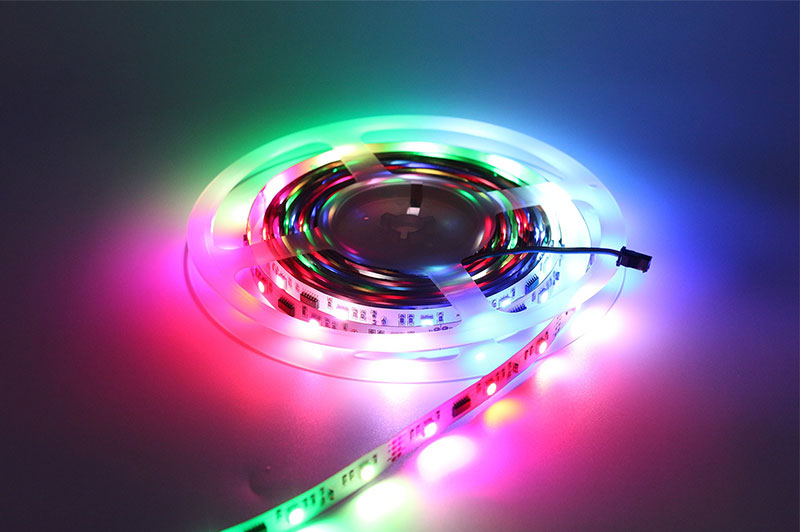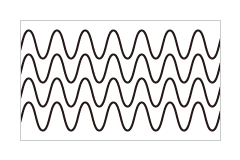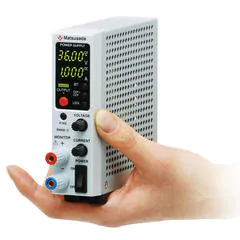
What is LED?
Light Emitting Diodes (LEDs) are a type of semiconductor. LED was discovered in 1907, and red, orange, and yellow-green LEDs have been in practical use since the 1950s and were mainly used for indicators and other display applications.
In 1993, blue light-emitting LEDs were commercialized, and the LEDs were in widespread use with the invention of the blue light-emitting diode in 1993. In 1996, white light-emitting diodes were completed three years later, attracting attention for lighting and display applications. Using incandescent and fluorescent lamps has been mainstream so far, but LEDs are more energy-efficient and have a longer lifespan. Nowadays, they are widely used for residential lighting.
LEDs consist of a P-N junction in which a P-type semiconductor and an N-type semiconductor are joined together. When a forward voltage is applied to an LED chip, holes, and electrons collide and recombine at the junction surface of the P-type and N-type semiconductors. The LEDs give off light when an electrical current flows through them.
LED Features
LEDs have some characteristics as follows.
- Long life span
- Small
- Strong shock resistance
- Low power consumption
- Fast response time
- Easy control of light (quickly flashing light)
As semiconductors, LEDs are extremely small and durable solid-state devices that provide much longer service life. Additionally, they are more impact-resistant than conventional lighting with glass bulbs.
The semiconductors that emit light themselves differ from incandescent lamps, which use electrical resistance to generate red heat, and fluorescent lamps, which emit fluorescent paint through an electrical discharge. Therefore, the LEDs are energy efficient, where up to 90% of the power can be turned into light and not heat. You can also easily control the blinking and light intensity because of the simple mechanism that energizes the semiconductor.
LED vs OLED vs LD
What Is OLED?
One type of LED is the OLED. OLED stands for "Organic Light Emitting Diode," described as an organic electro-luminescence device. It emits light when electricity is applied using organic materials of organic electroluminescence.
The organic EL structure consists of electrodes, transport layers, and emissive layers stacked on top of a transparent board. When voltage is applied to this layer, the emission layer emits light.
There are two types of OLEDs and light-emitting polymers that use organic electroluminescence.
Another new technology that has been utilized is a quantum dot. This uses semiconductor crystal materials to convert incoming light into light of a different wavelength to create color.

As for displays using organic electro-luminescence, a color plate is placed in front of the organic EL element to create color. Meanwhile, with quantum dots, the color itself can be emitted.
Difference Between OLED and LED
The principles of OLEDs and LEDs are the same. In both cases, light is emitted by passing electricity through a material sandwiched between electrodes formed on a substrate. But it differs as to whether the emitting material is organic or inorganic.
OLEDs use organic materials as light emitters and emit light through electricity. Inorganic LEDs use inorganic materials that are also found in conventional LEDs for lighting.
What Is LD?
A laser diode (LD), referred to as a semiconductor laser, is a semiconductor device that can oscillate a laser when electricity is applied to it. The light emission mechanism of the LD is the same as that of light-emitting diodes (LEDs).
The LD came around 1950, when the LEDs were commercialized. It was not until the late 1970s that it was practically applied as a device.
Compared to other laser oscillators, the LD is smaller, less expensive, and consumes less power. They are used not only in industrial applications, but also in many of the devices we commonly use. Laser diodes are also used in laser pointers.
Difference Between Laser Diodes and LEDs
In terms of operating principle, a laser diode (LD) emits light by stimulated emission, and an LED emits light by spontaneous emission. A laser differs from ordinary light in that it consists of a single wavelength with a narrow spectral width, and is characterized by its wave phase alignment and high directivity.
Therefore, LDs have the characteristic that it is easy to control the energy of the oscillating laser.
| Infrared LD | Infrared LED | |
|---|---|---|
| Wavelength spectrum |
 Short wavelength |
 broad wavelength |
| Phase |
 Coherent |
 Incoherent |
| Spread of light | Straight | Divergent |
| Emission method | Stimulated emission | Spontaneous emission |
LED Widely Used
LED applications have increased dramatically since the invention of the blue light-emitting diode. This section compares basic LEDs with LDs following the main applications.
LED
- Indicator lights on electronic devices
- Lighting system
- Automotive lighting bulbs
- TV and monitor backlights
- Optical mouse
LEDs have often been used for power signals in electronic devices and home appliances. In simple devices, LEDs are sometimes used as a rectifier or power ON switch.
The invention of blue light-emitting diodes achieved a wide range of applications such as car headlights, streetlights, and traffic signals, in addition to home lighting.
From the aspect of environmental consideration, LED lighting is considered the most promising technology with relatively low energy consumption. LEDs are also widely used as flashlights in electric decorations, displays, etc.
Laser Diode (LD)
- Optical disk
- Laser pointer
- Projector
- Laser processing machines
- Laser mouse
- Laser level, Laser marker
- Range finder
Because of the size and cost improvement, laser diodes are getting popular in information equipment. Optical disc laser in reading/writing and laser mouse are examples of laser applications. LDs are also used for laser markers and range meters such as Time Of Flight (TOF) sensors.
Reference (Japanese site)
- 東芝ライテック - LEDの基礎知識
(https://www.tlt.co.jp/tlt/lighting_design/proposal/led_basics/led_basics.htm) - Canon - 有機ELのしくみと特徴
(https://global.canon/ja/technology/kids/mystery/m_04_12.html) - ROHM - レーザーダイオード (半導体レーザー) とは?
(https://www.rohm.co.jp/electronics-basics/laser-diodes/ld_what1)
Recommended products
Matsusada Precision offers a great selection of programmable DC power supplies with Constant Current (CC) mode, ideal for the evaluation of LED and OLED lamps.






